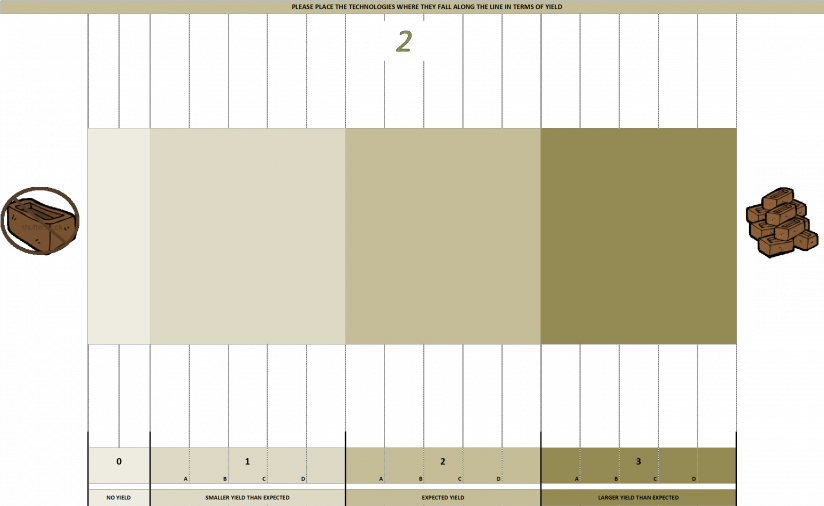You are here
Farmer Rating of Yield
In cases where farmers have tried a new technology but on-farm yield measurements and detailed surveys are not available, it is possible to obtain farmers’ qualitative evaluations of yields, for example asking them to rank or rate yields for various varieties or management practices, thus making inferences to a particular intervention.
How to operationalize the metric
Method of data collection and data needed to compute the method:
Farmer rating of yield can be operationalized in many ways. For example, farmers can be asked how they rate the yield of a given management practice or variety on a scale of 1 (very poor) to 5 (very good). Figure 1 provides an example with 4 categories (0-3) which are then further subdivided into 4 levels (a-d). This particular example is designed for use with cards representing various intercropping systems and species combinations, but it could be adapted even for varieties or other management practices.
The amount produced and the area it is produced on are not usually made explicit in this type of rating. Farmer ratings may be based on implicitly comparing new technologies with what they believe would have been produced from their own practice on that field during the season the new technology was used.
A first step in analyzing this data is to create a table comparing the frequencies of each score for all comparisons (technologies, varieties, etc.) or graphing those frequencies (Coe, 2002).
Coe (2002) cautions against treating these scores as if they were measured on a continuous scale (i.e. comparing means, carrying out ANOVAs or using them as continuous variables in a linear regression). Instead he suggests using a statistical program to model the information as ordered categorical data, which allow for ordinal regressions. More details about analyzing rating data (which is ordered categorical data) can be found in Coe, 2002 and an empirical example is De Groote et al. 2010.
Limitations regarding estimating and interpreting:
Rating of yield is a coarse estimate of actual production, which may be more subjective than physical measurements. Where possible ratings should be disaggregated by gender, wealth categories, etc. to see what differences exist from these diverse perspectives.


